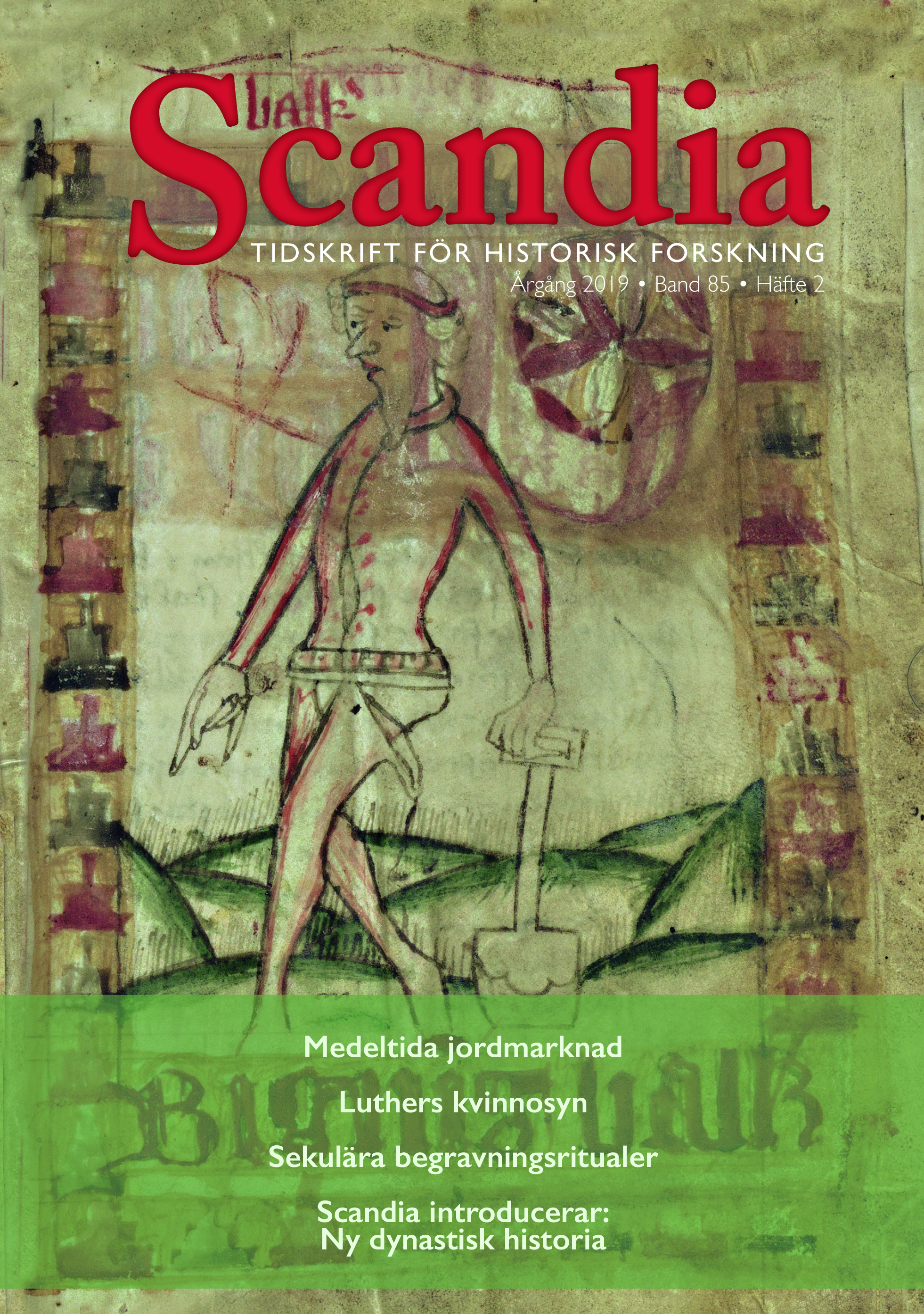Jordpris och jordränta i den senmedeltida krisen
Keywords:
crisis, medieval, rent, land market, Sweden, nobility, commoners, churchAbstract
The late medieval agrarian crisis has been discussed in Swedish research for a long time. While there is general agreement that rents declined from the mid-fourteenth century and onwards, there are different opinions with regard to the chronology of this process. There is also disagreement regarding the extent to which the Church was affected by this crisis. In order to achieve a more reliable view of the crisis, we need to gather the available information on land prices and rents in a more systematic way. This article presents a long time series based on about 1,300 purchases of real estate property in the Lake Mälar provinces and about 2,100 quotations relating to the size and composition of the rent during the period of 1274–1540. In these provinces, farm sizes were often set in a number of öresland. These öresland were not fixed areas but rather a measure of the production capacity of the farm. As a rough average, one öresland corresponded to about three hectares of land, out of which half was sown each year.
Using this information, it is possible to construct a time series of land prices and rents per öresland. The main source used here is SDHK (Svenskt Diplomatariums huvudkartotek), a digital publication providing information on about 44,000 documents up to 1540.
The main results may be summarized as follows.
Land prices rose substantially before the Black Death and remained at a very high level up to about 1370. A long period of falling prices followed until about 1420/30. There was no clear trend during the remainder of the fifteenth century, while the first four decades of the sixteenth century were characterized by a downward pressure on land prices. The evolution of rent is fairly similar to that of land prices. However, rents rose relative to the land price during the first decades of the fourteenth century and reached a very high level before the Black Death. Subsequently, rents fell until the 1430s.
Which social category was the most adversely affected by the declining rent? The answer depends on the time perspective. For the period as a whole, 1274–1540, the nobility suffered the greatest loss. During the century following the Black Death, however, the Church lost more than the nobility and the commoners, while the latter fared best.
The Church retrogressed as a buyer of land in the second half of the fourteenth century. Despite increased activity during the latter part of the fifteenth century, it is clear that the Church was less successful as a buyer
in the long run, compared to noblemen and commoners.
The nobility advanced substantially as a buyer of land, particularly during the half-century following the Black Death. During the same period, the nobility also increased the size of their purchases, while they also paid a higher price per öresland compared to the other categories.
However, the view of the nobility advancing strongly is modified when we not only study purchases but also sales. The net result of purchases and sales was positive for the Church, but negative for nobility and commoners. The Church sold only relatively small parts of their land.
Commoners gradually became more active in the land market. In the long run, trade in land was to comprise larger units than previously. Before 1400, the median size of purchases was around 3 1/2 öresland, which was probably less than what was needed for subsistence. During the first half of the fifteenth century, the median size grew to four öresland, and in the second half of the century it exceeded five öresland. This trend is to be seen against the backdrop of falling land prices, enabling greater numbers of people to buy sufficiently large farms. It corresponds with the increased emphasis during the late medieval period on promoting the view that peasants should cultivate as much land as was sufficient for the provision of the household, taxes and other dues.
Nor should the amount of land cultivated be too large. The law of 1442 outlawed a peasant to buy more freehold land than he needed for being adequately provisioned (fullsutten). This law was part of a broader set of anti-capitalist regulations aiming to limit the role of capital in the farmland trade. The late medieval land price decline may have produced favorable conditions for applying these regulations, thereby contributing to counteracting a deeper socioeconomic polarization among peasants.
Finally, some calculations of profitability (the ratio of rent to price) have been carried out. They suggest that the average of this ratio was around five percent (a median of seven percent) during the fourteenth century as well as during the first half of the fifteenth century.
Profitability rose somewhat during the second half of the fifteenth century, but a clear upward trend cannot be seen until the early sixteenth century. It may be surprising that profitability was stable for a long time after the Black Death, but we should keep in mind that land prices fell as much or even more than rents.





